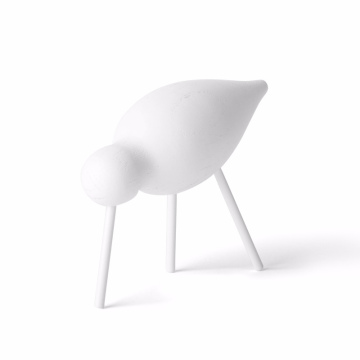Yasai no Tempura: Japan’s Crispy Vegetable Delight
Yasai no Tempura (野菜の天ぷら) is a popular Japanese dish consisting of vegetables coated in a crispy batter and deep-fried to perfection. The dish is a variation of tempura, a beloved staple of Japanese cuisine, known for its delicate yet crunchy texture and light, airy batter. Though tempura itself has deep roots in Japan, yasai no tempura, or vegetable tempura, has its own history and significance within the context of Japanese culinary traditions.
The Origins of Tempura: A Culinary Journey from Portugal to Japan
To understand the history of yasai no tempura, it’s important to first explore the origins of tempura itself. The dish is widely believed to have been introduced to Japan by Portuguese missionaries and traders in the 16th century, during the Nanban period (1543–1614). The Portuguese introduced a method of frying food in batter, which was inspired by the European practice of frying fish and vegetables.
At the time, Japan’s deep-frying methods were primarily used for cooking fish, but the Portuguese brought with them the technique of battering and deep-frying a wider variety of foods. The word “tempura” is thought to have derived from the Latin word “tempora”, which referred to the Catholic practice of abstaining from eating meat during certain periods of the year, a time when vegetables were often consumed instead of meat. Over time, tempura became ingrained in Japanese culinary culture, particularly in the Edo period (1603–1868), where it evolved into a beloved street food and restaurant dish.
The Rise of Yasai no Tempura: A Focus on Vegetables
While traditional tempura often featured seafood like shrimp or white fish, the focus on vegetable tempura came later as the dish expanded into the realm of seasonal and regional cooking. Yasai no tempura emphasizes the freshness and delicate flavors of seasonal vegetables, with popular choices including sweet potatoes (satsumaimo), eggplant (nasu), green beans (ingen mame), zucchini, pumpkin (kabocha), and mushrooms. These vegetables are chosen not only for their flavor and texture but also for the variety of colors they bring to the plate.
The concept of vegetable tempura became more popular during the Meiji period (1868–1912), when Japanese chefs began to experiment with different ingredients and techniques in their quest for refinement and balance in culinary arts. By the time of the Showa period (1926–1989), yasai no tempura had firmly established itself as an essential dish in both home cooking and restaurants.
The Culinary Composition of Yasai no Tempura: Simple Yet Flavorful
The preparation of yasai no tempura requires a balance of technique, ingredients, and timing. The vegetables are typically sliced into thin, uniform pieces, making them easy to cook and ensuring that the batter adheres evenly to the surface. Here's a breakdown of the culinary components of yasai no tempura:
- Vegetables: The selection of vegetables used in yasai no tempura is crucial. Common vegetables include sweet potato, eggplant, green beans, kabocha squash, asparagus, and mushrooms. The key is to use seasonal vegetables that maintain their natural sweetness and texture when fried.
- Batter: The batter used for tempura is light and crispy, made with a combination of flour, cornstarch, ice water, and sometimes egg. The batter is lightly mixed to prevent overworking the flour, which helps achieve a crispy, airy texture. The cold water used in the batter helps keep the coating from absorbing too much oil, ensuring the crispy finish.
- Frying Oil: The oil used for frying tempura is typically vegetable oil or sesame oil, which has a neutral flavor and high smoking point, making it ideal for deep frying. The oil must be kept at the proper temperature (around 170-180°C/340-355°F) to ensure that the batter cooks quickly, becoming crisp without absorbing too much oil.
- Dipping Sauce: Tempura is often served with a dipping sauce known as tentsuyu, a mixture of soy sauce, mirin, and dashi broth. The sauce complements the crispy vegetables, adding a layer of umami and sweetness that enhances the natural flavors of the vegetables.
Yasai no Tempura in Japanese Culinary Culture
Yasai no tempura represents a harmonious balance between the freshness of vegetables and the delicate crunch of the batter. The dish is a reflection of the Japanese culinary philosophy, which emphasizes seasonality, simplicity, and the appreciation of natural flavors. Tempura, in general, became a favorite in Japanese cuisine for its ability to showcase the texture and flavor of ingredients without overwhelming them with heavy seasoning.
Yasai no tempura is often served as a side dish in kaiseki (traditional multi-course meals), where it complements other delicate courses. It’s also a popular option in tempura restaurants, where patrons can enjoy a variety of tempura offerings, ranging from vegetables to seafood. In these restaurants, the tempura chef often prepares the dish à la minute, frying each piece of vegetable tempura to order for an unbeatable crispy texture and flavor.
In more casual settings, such as izakayas (Japanese pubs), yasai no tempura is served as part of a larger selection of small plates, allowing diners to enjoy it alongside a variety of other dishes. Its versatility and lightness make it a perfect dish to pair with rice, soup, and even sake.
Yasai no Tempura in Modern Culinary Innovation
In contemporary Japanese cuisine, yasai no tempura has continued to evolve. While traditional vegetable tempura maintains its authenticity, chefs now experiment with different ingredients, batters, and frying methods. For instance, some restaurants use gluten-free flours or sparkling water for the batter, creating a different texture and flavor profile.
Moreover, vegetable tempura has gained international popularity as part of Japanese fusion cuisine, often appearing in modern sushi restaurants or vegetarian and vegan menus around the world. Its crisp texture and light batter have made it a favorite for those looking for a vegetable-centric fried dish that retains a balance of flavor and health-conscious appeal.
Conclusion: Yasai no Tempura – A Crispy, Flavorful Tradition
Yasai no tempura is a perfect example of the beauty and simplicity that defines Japanese cuisine. This crispy vegetable delight is rooted in the historical fusion of Portuguese frying techniques and Japanese culinary ingenuity, creating a dish that showcases the natural flavors and textures of vegetables through a crispy, airy batter. From its humble origins to its current status as a beloved dish in both traditional and modern Japanese cooking, yasai no tempura remains an enduring symbol of Japanese culinary artistry and a dish that continues to delight palates around the world.






